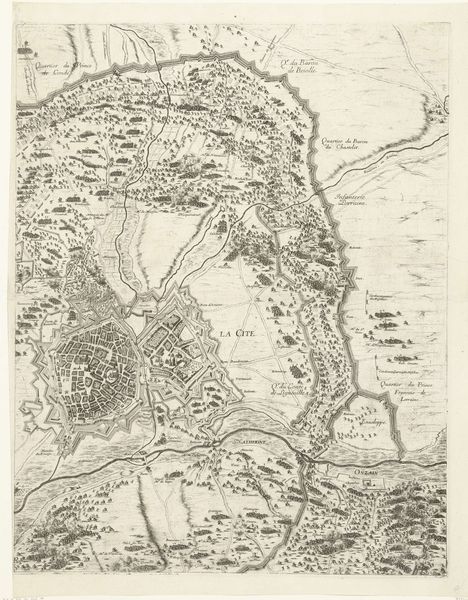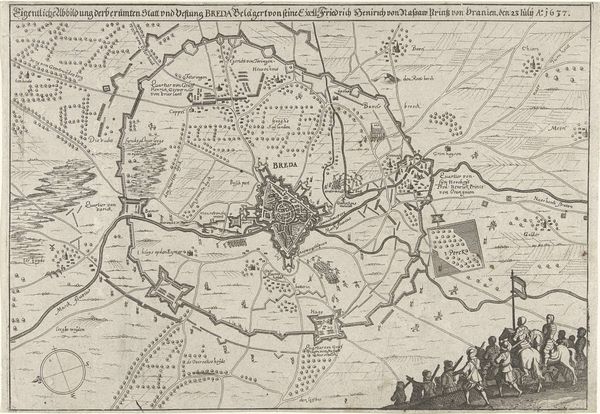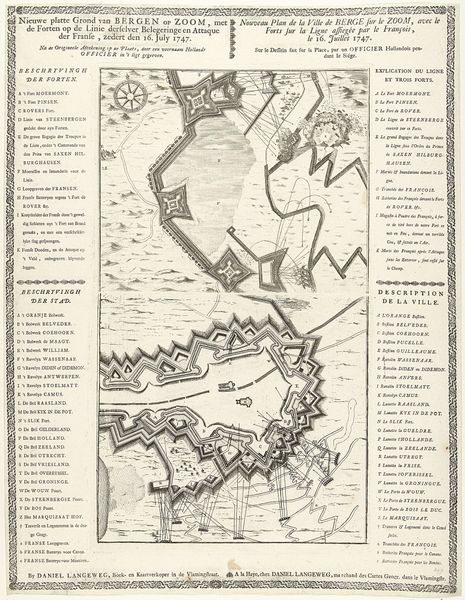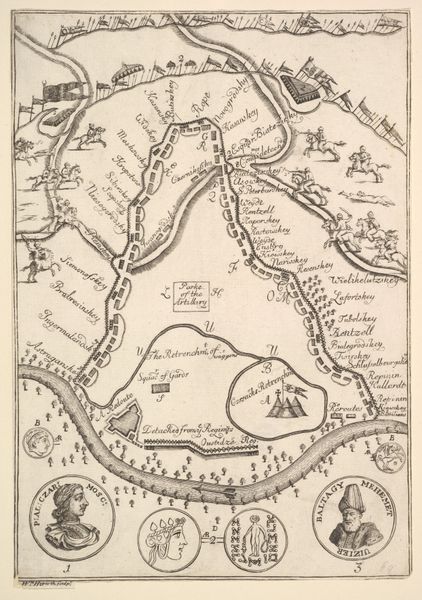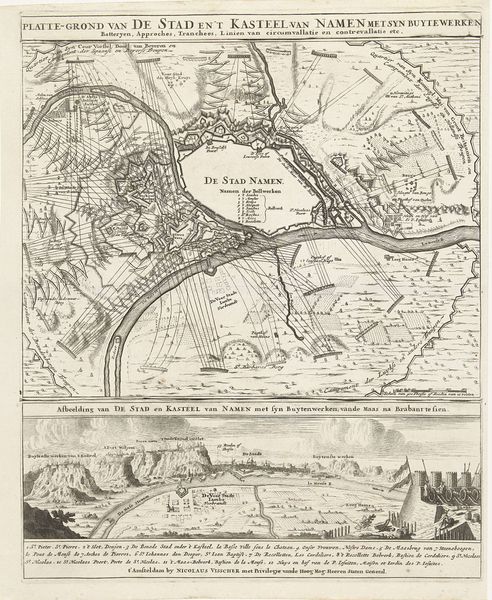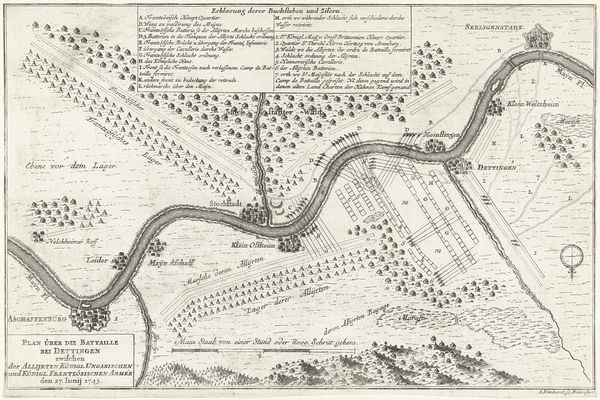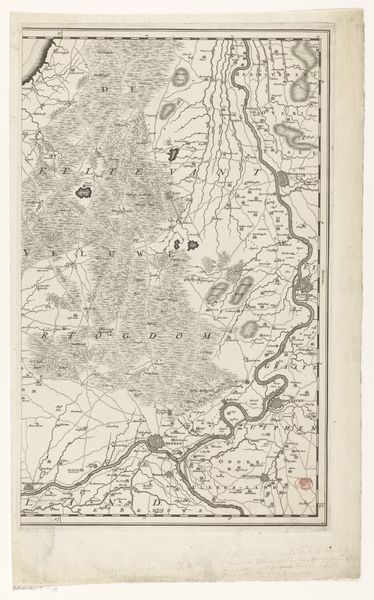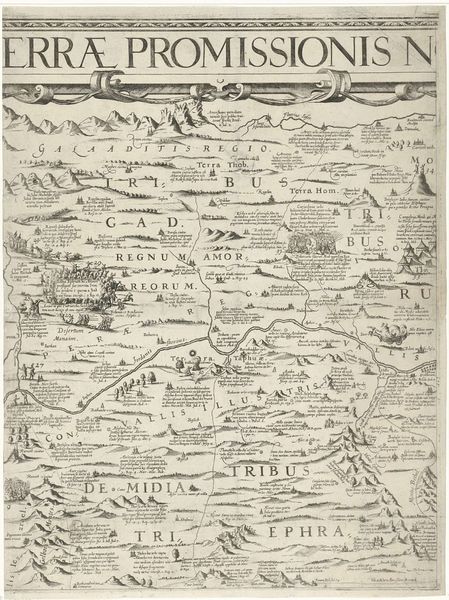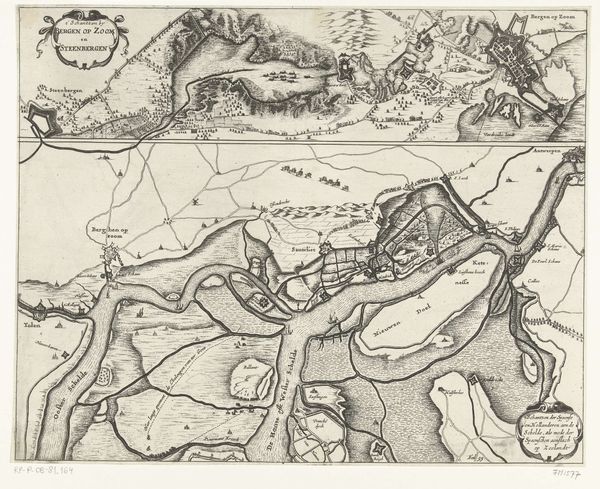
Ontzet van Arras, belegerd door de Spanjaarden (middelste rij, plaat 1), 1654 1655
0:00
0:00
drawing, ink, pen
#
drawing
#
pen drawing
#
landscape
#
perspective
#
ink
#
geometric
#
line
#
pen
#
cityscape
#
history-painting
Dimensions: height 584 mm, width 465 mm
Copyright: Rijks Museum: Open Domain
Nicolas Cochin created this engraving in 1654, depicting the relief of Arras besieged by the Spaniards. What strikes us first is the omnipresence of military camps, arranged in geometrical patterns around the besieged city. The oak leaves motif, bordering the image, traditionally symbolizes strength, endurance, and, notably, liberty. This symbol is not exclusive to the 17th century; it echoes back to ancient Greece and Rome, where oak wreaths crowned victors, but also forward to later uses in nationalistic emblems. Consider how the laurel wreath, another symbol of victory, reappears throughout history, adorning emperors and athletes alike. These symbols tap into a collective memory, evoking a sense of continuity and shared human experience. Just as the oak leaves here suggest resilience and triumph, such motifs engage us on a primal level, triggering associations deeply embedded in our cultural consciousness. The power of such emblems lies in their non-linear journey through time, continually adapting and resurfacing in new contexts, yet retaining a core emotional resonance.
Comments
No comments
Be the first to comment and join the conversation on the ultimate creative platform.

